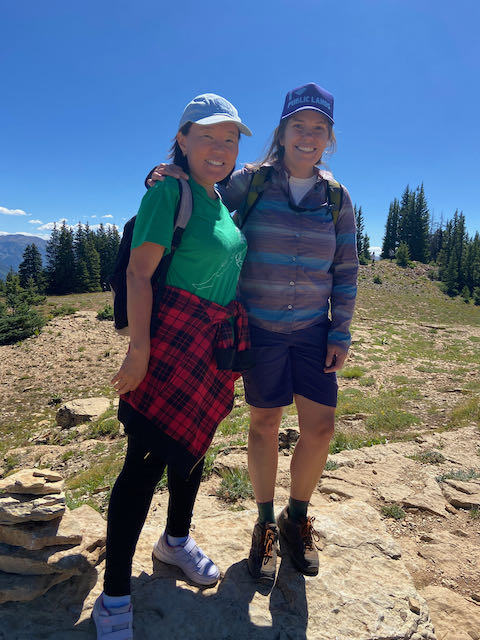Watersheds Hold Connections: My Water Story
Flying across my headwaters state of Colorado on the spring equinox my forehead is glued to the small oval window of the regional jet. We climb steeply up out of the high mountain valley, turn north and follow the Colorado River upstream toward its source on the western side of Rocky Mountain National Park. I always request a window seat when I fly as I get to pretend to be a cartographer as I study the diverse landscape of colors, textures, shapes, and patterns that create places. Flying over known watersheds I place myself down in those places that have been part of my life forming me to who I am today carving and creating my story. Water continues to shape and mold the landscape and our being.
Getting to know a watershed is like getting to know a friend. Watersheds are places complete with stories, personality, place names, unique patterns and topography, social norms, distinctive plants and animals, political structures, and most of all distinguishing rivers and tributaries. Watersheds define our valley communities and are our homes. In western Colorado, residents and visitors alike claim and are proud of their relationship with the unique valleys: the Yampa, Eagle, Roaring Fork, North Fork, Gunnison, San Juan, and Animas. They help define our relationship to the land.
I have been blessed to teach others to identify with their home watersheds. Teaching others to better understand their local landscape and its many layers of distinctions: topography, water, natural history, politics, socioeconomics, history, to name a few is my passion. These distinctions are the things that make a location a place. As a watershed educator I have been working to foster others’ relationships with their rivers and streams and better understand the many factors that influence these watercourses from across their watershed. Through these years of working with local people connected to the place for generations, I consistently learn more about my watershed - its landscape, its history and its meaning to people.
On this day of equal day and night high above the continental divide my eyes follow the V’s of the rivers and streams flowing west and then those flowing east as we fly toward the Front Range. From high in the sky, similarly to down on the land, I find connection to the rivers and understand the critical value of the snow covering the peaks to fill the rivers. Water is our lifeblood. Water is our source. Water shapes the landscape, ultimately shaping its people. Watersheds hold these connections across the varied landscape and give us an opening to become part of the place, part of the story.
Getting to know a watershed is like getting to know a friend. Watersheds are places complete with stories, personality, place names, unique patterns and topography, social norms, distinctive plants and animals, political structures, and most of all distinguishing rivers and tributaries. Watersheds define our valley communities and are our homes. In western Colorado, residents and visitors alike claim and are proud of their relationship with the unique valleys: the Yampa, Eagle, Roaring Fork, North Fork, Gunnison, San Juan, and Animas. They help define our relationship to the land.
I have been blessed to teach others to identify with their home watersheds. Teaching others to better understand their local landscape and its many layers of distinctions: topography, water, natural history, politics, socioeconomics, history, to name a few is my passion. These distinctions are the things that make a location a place. As a watershed educator I have been working to foster others’ relationships with their rivers and streams and better understand the many factors that influence these watercourses from across their watershed. Through these years of working with local people connected to the place for generations, I consistently learn more about my watershed - its landscape, its history and its meaning to people.
On this day of equal day and night high above the continental divide my eyes follow the V’s of the rivers and streams flowing west and then those flowing east as we fly toward the Front Range. From high in the sky, similarly to down on the land, I find connection to the rivers and understand the critical value of the snow covering the peaks to fill the rivers. Water is our lifeblood. Water is our source. Water shapes the landscape, ultimately shaping its people. Watersheds hold these connections across the varied landscape and give us an opening to become part of the place, part of the story.



Comments
Post a Comment